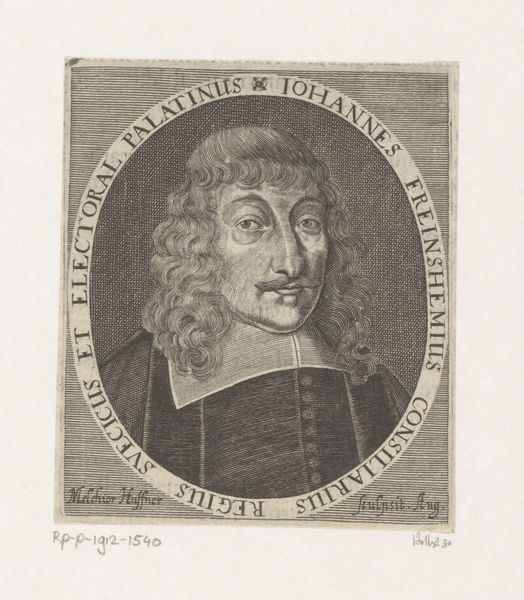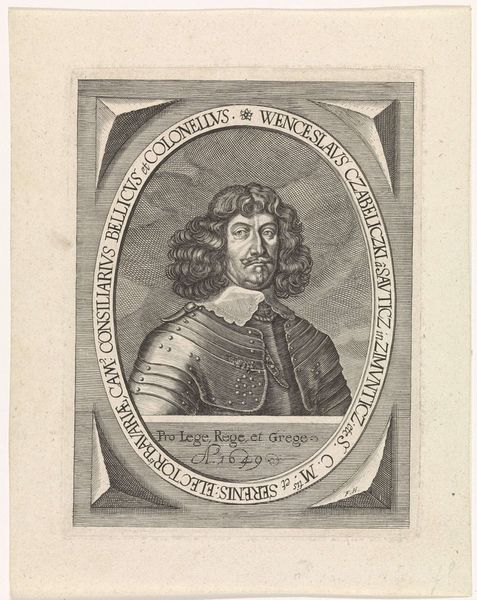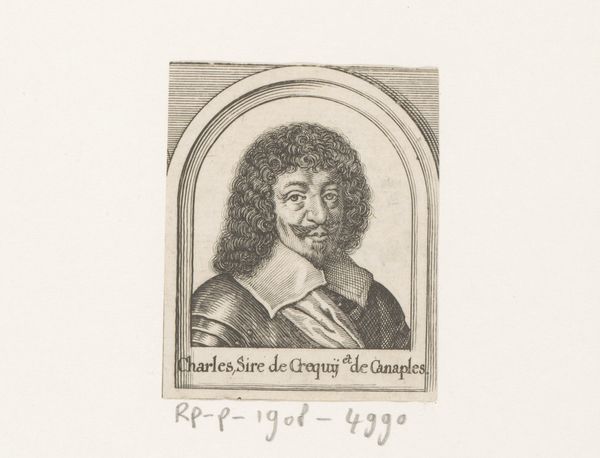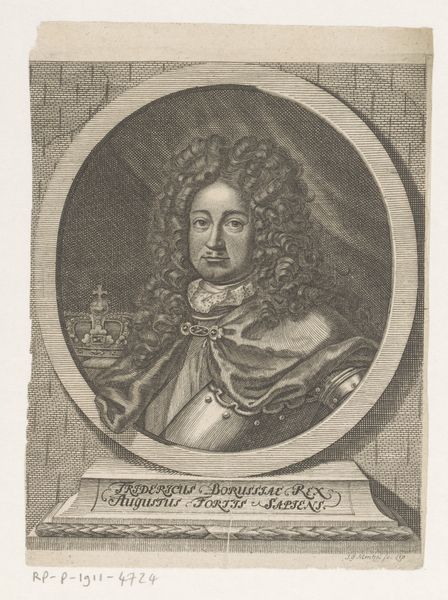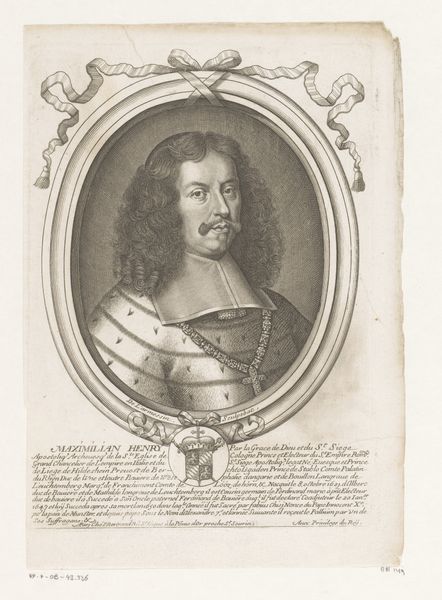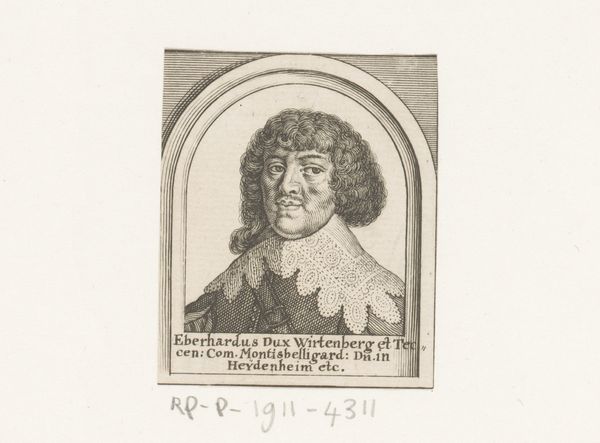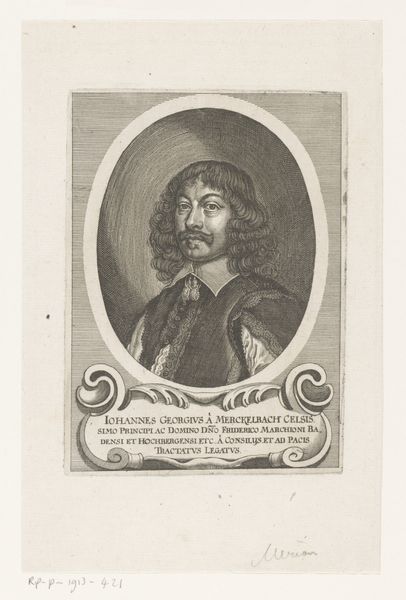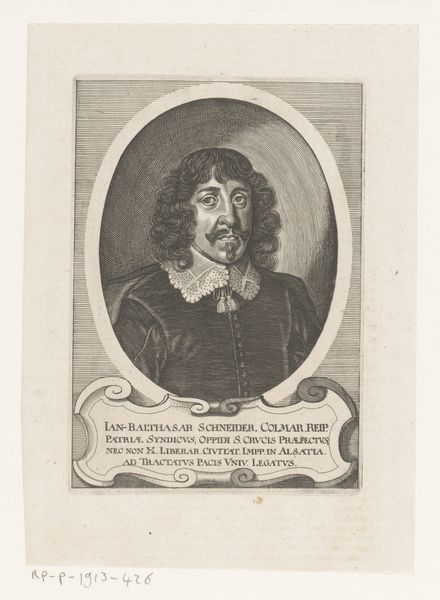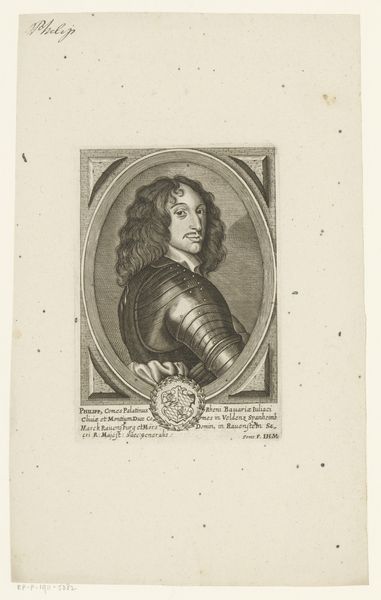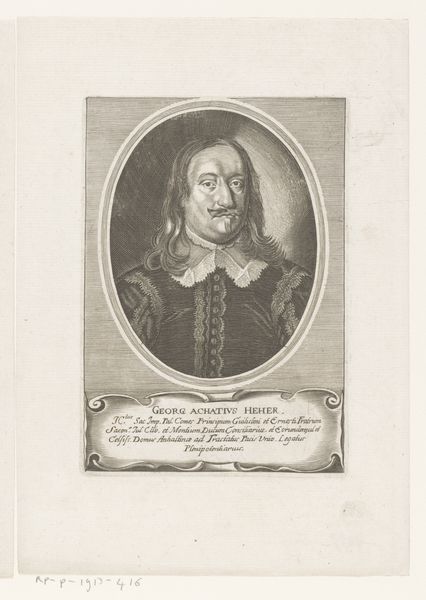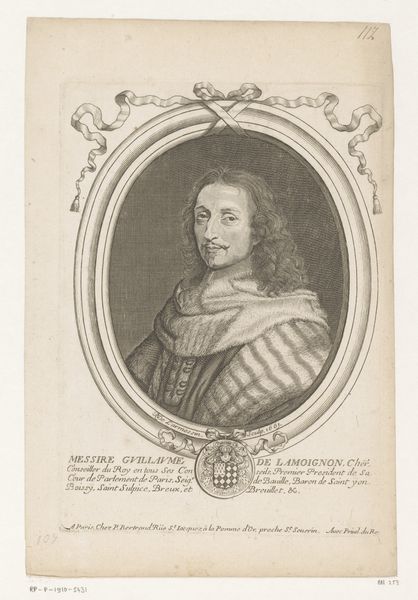
print, engraving
#
portrait
#
baroque
# print
#
old engraving style
#
history-painting
#
engraving
Dimensions: height 68 mm, width 58 mm
Copyright: Rijks Museum: Open Domain
Curator: Matthäus Merian the Elder, an engraver active in the first half of the 17th century, produced this likeness of Ferdinand III. It’s rendered as a print; specifically, it is an engraving. Editor: It has an archaic, somewhat stern mood about it, doesn't it? You immediately get the sense of power and a kind of...unyielding authority from the piece. Curator: The precision afforded by the engraving technique, with its clear lines incising the metal plate, mirrors the controlled display of Habsburg power, doesn’t it? Think about the material realities of making an image at that time – the skill involved, the labor necessary. Each line meticulously etched served to solidify the emperor's image for broad dissemination. Editor: Absolutely. We also need to remember that portraits like these are carefully constructed performances. It’s not just about likeness; it's about legitimizing Ferdinand's rule, especially given the turbulent political climate of the Holy Roman Empire then, amid the Thirty Years' War. Look at the laurel wreath. Think about its classical associations with triumph and emperorship. These visual cues aimed to solidify his standing, yet simultaneously obfuscated a landscape of constant war. Curator: A point well taken. And we see that the scale of production is relevant here. Engravings like this one were printed, allowing for their distribution. Think about where it ended up: in books, pamphlets, maybe even framed and hung. These multiples enabled a broader, arguably more diluted engagement than, say, a painted portrait commissioned and held privately. Editor: That wider access also complicates how Ferdinand was viewed. Different social groups would interpret his image through varied cultural lenses, be they supportive or adversarial. Consider how different religious communities—Protestant versus Catholic—might see that laurel wreath and the armour and whether they signaled justified authority, a Roman Catholic lineage, or arrogant imperial overreach. Curator: Yes, even down to the choice of ink, paper quality...each small choice had tangible effects on how this was circulated and interpreted, reflecting economic realities for both creator and consumer. Editor: Ultimately, a visual claim, carefully crafted but still inevitably prone to renegotiation, and, as time erodes power dynamics, ripe for present re-interpretation. Thank you for highlighting those details, that really helped to shape my experience with this image. Curator: And you, for directing attention towards the wider politics this print participated in and continues to evoke for us today.
Comments
No comments
Be the first to comment and join the conversation on the ultimate creative platform.
